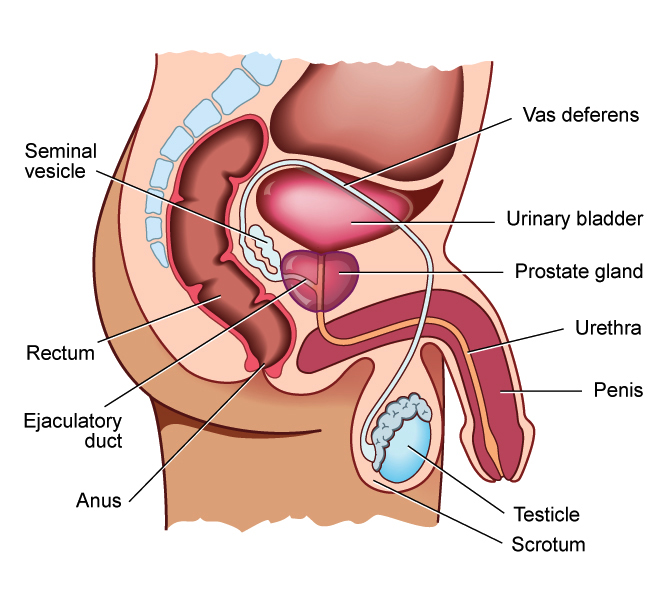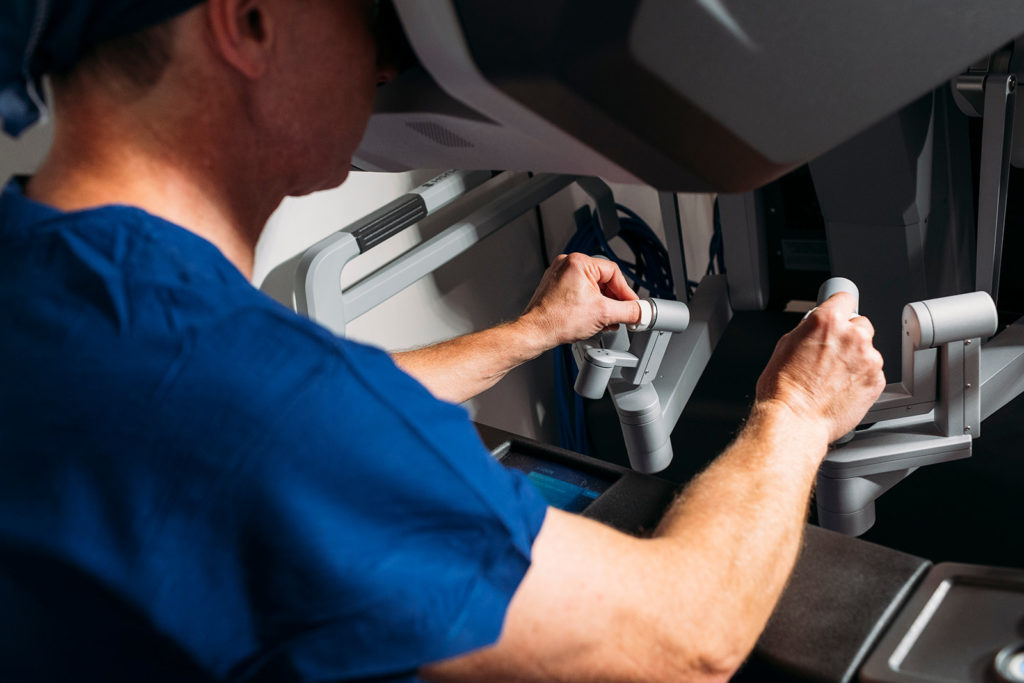
27 Feb What is Radical Prostatectomy – The Complete Guide
Radical prostatectomy is a surgical procedure that involves the complete removal of the prostate gland and is commonly performed as a treatment for prostate cancer. This comprehensive guide will delve into various aspects of radical prostatectomy, including the use of robotic technology, its target demographic, potential side effects, the recovery process, and its impact on life expectancy.

What is Radical Prostatectomy?
Radical prostatectomy (or more appropriately titled ‘complete prostatecomy’) is the surgical removal of the entire prostate gland, a walnut-sized organ located just below the bladder. This procedure is often recommended for men diagnosed with localised prostate cancer (localised meaning the cancer is confined to the prostate) and surgery is a viable treatment option.
Why is a Robot Used? When is a Robot Not Used?
Robotic-assisted radical prostatectomy involves the use of a surgical robot to enhance precision and control during the procedure. This approach offers several advantages, including improved precision, smaller incisions, and potentially faster recovery times. However, there are instances where a robot may not be used, such as when there is no access to robotic technology or due to the surgeon’s preference or expertise. The pros of robotic-assisted surgery include enhanced precision, smaller incisions, and potentially faster recovery, while the cons are essentially limited to the increased cost of robotic systems.

Who is it for?
Radical prostatectomy is typically recommended for men diagnosed with localised prostate cancer. The decision to undergo surgery is based on factors such as the stage of cancer, the patient’s overall health, and the potential benefits of surgical intervention.
Are There Any Side Effects?
Like any surgical procedure, radical prostatectomy is associated with potential side effects. These may include erectile dysfunction, changes in ejaculation, incontinence (temporary or permanent), urinary issues, and potential impact on fertility. It’s crucial for individuals considering this procedure to discuss these potential side effects with their healthcare team.
What Happens to a Man After the Prostate is Removed?
The absence of the prostate may impact urinary and sexual function. Regular follow-ups are essential to monitor recovery and detect any potential recurrence of cancer. Patients should openly communicate with their healthcare team about any concerns or changes in their health post-surgery.
The impact of radical prostatectomy on sexual function involves several aspects, including erection, ejaculation, and climax. The surgical removal of the prostate and seminal vesicles affects ejaculation, leading to dry ejaculation as seminal fluid is no longer produced. The division of the vas also prevents the ability to father children. Erection is influenced by cavernous nerves, located close to where prostate cancer commonly arises. While preserving these nerves is possible, it may not always be advisable for cancer removal.
Recovery of erections, if nerves are spared, takes an average of 4 months, with improvement continuing for 2-3 years post-surgery. Despite recovery, erections may be slightly less firm than before, and individual outcomes vary based on age and pre-surgery erectile strength. The likelihood of recovering erectile function is over 80% with good surgical technique and appropriate rehabilitation, as indicated by independent questionnaire-based follow-ups.
How Painful is the Recovery?
While pain levels can vary, discomfort is expected after surgery. Pain management strategies are employed to alleviate discomfort and enhance the overall recovery experience. Patients should follow their healthcare team’s guidance on postoperative care and pain management.
How Does This Affect Life Expectancy?
Generally, the removal of cancerous tissue through radical prostatectomy can contribute to increased life expectancy. However, individual outcomes depend on various factors, including the stage of cancer, overall health, and adherence to postoperative care. Ongoing monitoring and follow-ups are crucial to track recovery progress and detect any potential signs of cancer recurrence.
Radical prostatectomy is a significant step in the treatment of localised prostate cancer. Understanding the procedure, potential side effects, and the recovery process is essential for individuals considering this option. Open communication with healthcare professionals and adherence to postoperative care guidelines can contribute to a smoother recovery and improved long-term outcomes.




No Comments